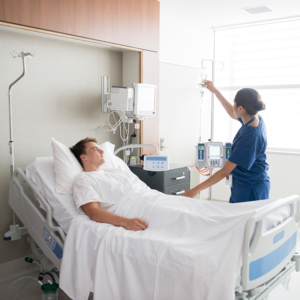Interventional Care


We notice that you are visiting us from . This site only services US-based visitors. Would you like to visit the site that is appropriate for your location?

Microbial burden on environmental surfaces in patient rooms before daily cleaning-Analysis of multiple confounding variables, authored by Boyce JM, Havill NL, Guercia KA, and Moore BA1 addresses the factors that contribute to an assessment of the microbial burden on environmental surfaces as well as determines the microbial burden on high-touch surfaces before cleaning/disinfection.
The study found that the level of microbial contamination on surfaces varies considerably. About 70% of the surfaces had ≤ 60 aerobic colony counts (ACC)/Rodac (mean 55.6 ACC/Rodac) but some samples were ≥200 ACC/Rodac. Mean ACCs differed significantly by type of surface, with the highest mean ACCs occurring on surfaces near patients and in bathrooms. Overall, about 30% of surfaces had ≥ 2.5 CFU/cm2 and would be classified as “dirty” before daily cleaning/disinfection. Using this criterion, the “dirtiest” surfaces were toilet seats (58.6%), bedside rails (52.1%), and bathroom grab bars (43.6%). Mean total ACCs per room did not differ significantly between quaternary ammonium compound (per melt-blown polypropylene wipe) use and improved hydrogen peroxide (per ready-to-use wipe). The mean ACCs differed significantly by site, type of ward, isolation room status, and study period. Surfaces with high ACCs were not necessarily contaminated with pathogens because overall ACCs do not correlate well with the level of pathogens present.
The key takeaways from this study are the level of microbial contamination on surfaces before cleaning/disinfection is generally low (mean 55.6 ACC/Rodac but there is high variance), mean total ACCs per room did not differ significantly between quaternary ammonium compounds, and improved hydrogen peroxide, and microbial burden on environmental surfaces is affected by multiple factors.
Boyce JM, Havill NL, Guercia KA, Moore BA. Microbial burden on environmental surfaces in patient rooms before daily cleaning-Analysis of multiple confounding variables. Infect Control Hosp Epidemiol 2021 Aug 16;1-5. doi: 10.1017/ice.2021.349.